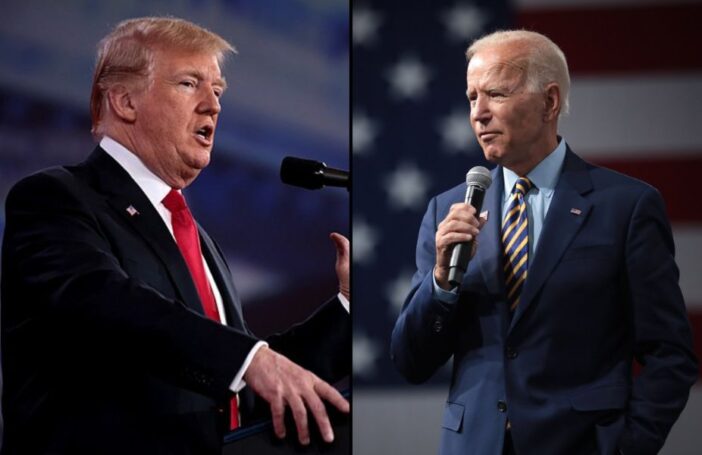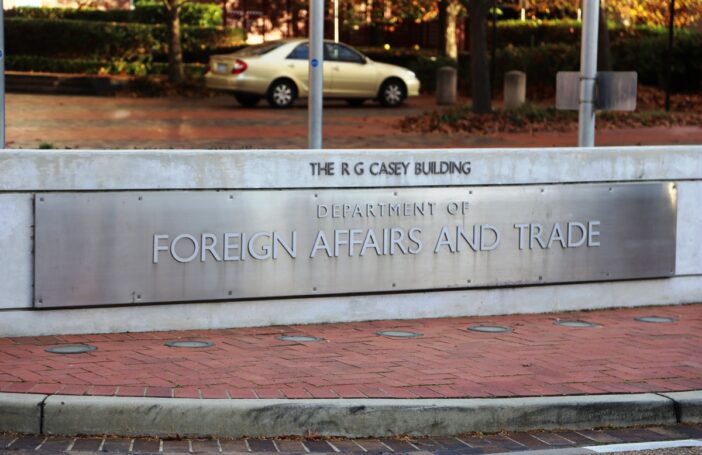Among the arguments the Trump administration has put forward for its review of US foreign aid programs — involving very large funding cuts and the dismantling of its principal international development agency, USAID — has been an apparent lack of “alignment” of these programs with US national interests. Even though implementation arrangements have varied, similar claims regarding the need for greater alignment between development and other foreign policy objectives have underpinned the abolition of stand-alone development agencies in New Zealand (2009), Canada (2013) and the UK (2020), as well as major changes to aid policy and budget settings in other Western donor countries.
The alignment justification also underpinned the abolition of Australia’s aid agency, AusAID, by the Abbott government in 2013. But there were some notable contradictions. In Opposition, then Coalition foreign affairs spokesperson Julie Bishop repeatedly criticised the Labor government’s alleged use of the aid program to help secure developing country votes as part of the Rudd/Gillard governments’ campaign for a non-permanent seat on the UN Security Council. But as was pointed out at the time, this campaign was run out of the Department of Foreign Affairs and Trade (DFAT) into which AusAID was subsequently merged. This critique therefore seemed to imply there was too much “alignment” between aid and wider foreign policy goals, rather than too little.
The truth is that the nexus between the provision of development assistance and the national interests that aid helps serve has always been complex, contingent and contested. As others have argued, “if there ever was a contested concept in politics, it is the ‘national interest’”. The circles of the Venn diagram through which we might articulate the relationship between Australia’s aid and its various national interests can range from the very broad and unmeasurable (such as encouraging “stability, prosperity and resilience”) to the very narrow and unmentionable (for example, transactional deals involving the use of aid to achieve specific diplomatic quid pro quos), and everything in between. They can also encompass the wider “public interests” of Australian society and the economy, broadly conceived, or those of narrower domestic constituencies, like Australian business interests. The explicit focus on aid’s role in advancing Australia’s “economic diplomacy” under Bishop’s tenure as foreign minister is an example of the latter.
For around twenty years (1997-2020), this ambiguity was partially resolved by directly equating “poverty reduction and sustainable development” with Australia’s “national interests”. This was reflected in the various policy statements of both major parties when it came to articulating aid’s purpose, albeit in different combinations. This gave the aid program some kind of anchoring in a clear, overarching and measurable set of outcomes. Moreover, they were the kind of outcomes that could be justified in terms of a wider, public interest shared by most Australians.
But even this rendering did not avoid tensions between Australia’s interests in a particular development outcome and our other foreign policy goals. For example, the tensions between Australia’s longstanding assistance to Nauru related to the offshore processing of people arriving irregularly by boat and the tangible deterioration in governance in that country, which is heavily reliant on this assistance, have endured. While this assistance may have helped achieve Australia’s “interests” when it comes to deterring people-smugglers, it has come at the expense of Australia’s other regional objectives, our human rights record, and Nauru’s own long-term development.
As argued elsewhere, the current focus on “all tools of statecraft” as a framework for thinking about these relationships also elides more than it elucidates. This is because, depending on one’s particular definition, statecraft says nothing about the goals the government is trying to achieve (it is often about the tactical use of “carrots and sticks”) or its goals are so lofty (for example, achieving a “rules-based order”) it cannot assist in adjudicating the trade-offs between them. It also leaves aid more vulnerable to chopping and changing because, by making Australia’s goals even less clear, it implies an even greater level of political and bureaucratic discretion in setting and adjusting what these goals might be. And it omits the uncomfortable reality that elites in recipient nations can exert their own forms of “statecraft” which might involve manipulating Australia’s aid for their own tactical advantage, further diluting a focus on development objectives. Nor have successive Australian governments been willing to subject progress on those foreign, trade and security policy goals that aid is supposed to advance to the same level of scrutiny that surrounds the performance and impacts of our development programs, further obscuring trade-offs.
Usefully, some have suggested alternative frameworks which could help untie these policy knots. These frameworks highlight the potential advantages of thinking about aid as a form of national and international “problem solving” which involves “shift[ing] our focus from things we want to do and towards things that most significantly impede our welfare.” Others have similarly suggested the value of “mission-driven approaches” emphasising the articulation of clear policy goals and the empowerment of development agencies, partners and experts with the resources, flexibility and autonomy necessary to achieve them. Going further, the idea of “Global Public Investment” moves beyond traditional aid models towards more inclusive, cooperative systems of shared responsibility for global challenges and the funding of global public goods. These ideas start from what a future, reformed development sector that can achieve multiple, reinforcing goals — enabling global public goods, such as poverty reduction and climate action, and meeting shared policy objectives — might look like.
None of these frameworks requires making Australia’s development program less “aligned” with Australia’s “interests”. Instead, they would bring a much-needed definition and clarity to the relationship between its sometimes-competing interests, help it navigate the inevitable trade-offs that will arise and, in doing so, further strengthen Australia’s development partnerships.
This is an expanded version of an article which was first published by The Interpreter.





“an apparent lack of “alignment” of these programs with (US) national interests. ”
Yet no mention of the world’s poor in terms that highlight the disparities between them and us:
Last year, the World Bank reported: “Global poverty reduction has slowed to a near standstill”
“Today, almost 700 million people (8.5 percent of the global population) live in extreme poverty – on less than $2.15 per day. Progress has stalled amid low growth, setbacks due to COVID-19, and increased fragility. Poverty rates in low-income countries are higher than before the pandemic.
Around 3.5 billion people (44 percent of the global population) remain poor by a standard that is more relevant for upper middle-income countries ($6.85 per day), and the number or people living on less than this standard has barely changed since the 1990s due to population growth.”
What happened to our being part of the wealthy west ? Sharing some of that wealth with the poor of our world ?
And it is “our world” – not a country to be hidden away behind tariff walls. The GATT/WTO negotiations over many decades and agreements were intended to share the benefits of international trade, especially those who contributed to that trade from what used to called “developing countries”.
I bought a a light all-weather jacket recently – to my delight, it had been made in the Ukraine. Some wealth shared where it was needed.